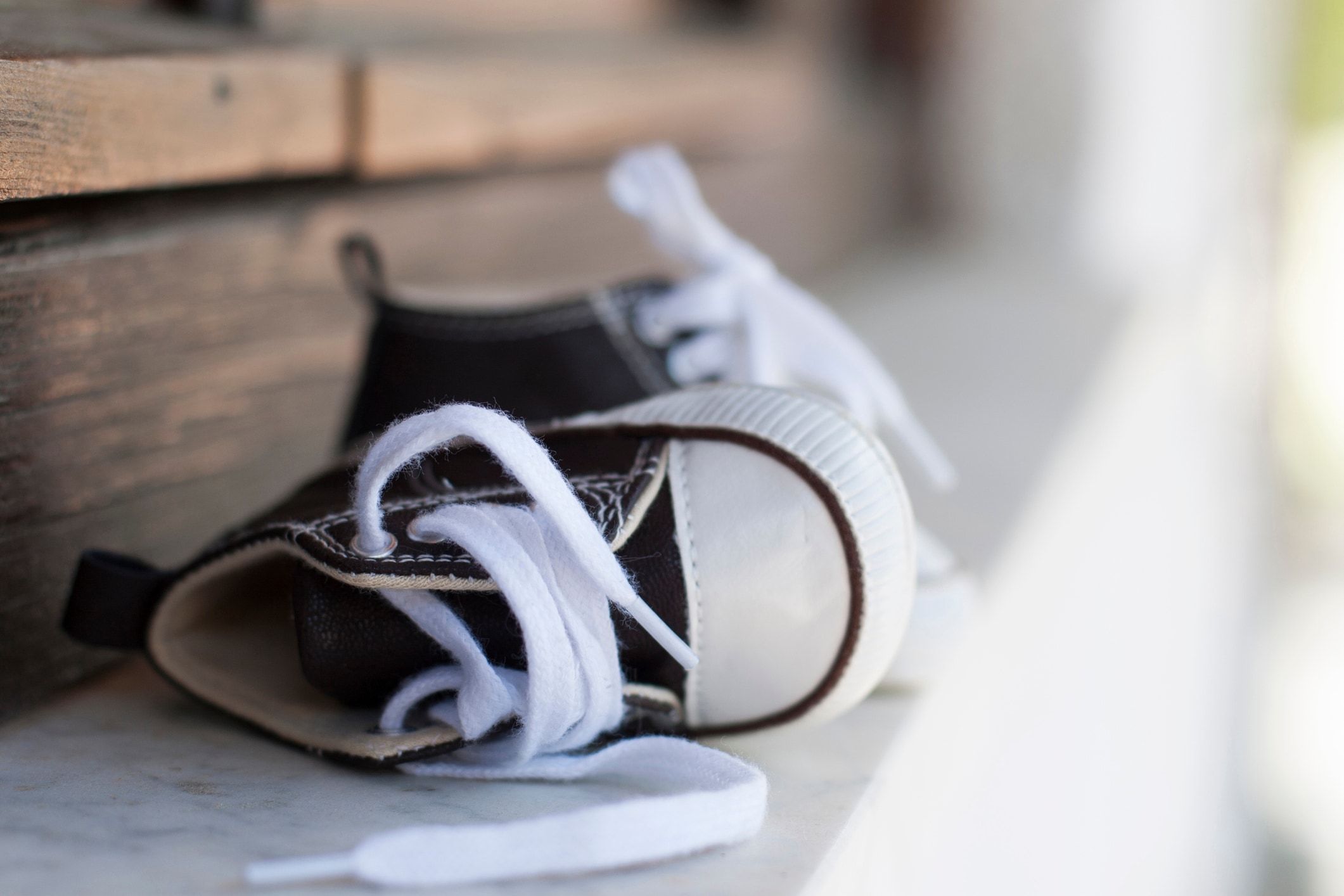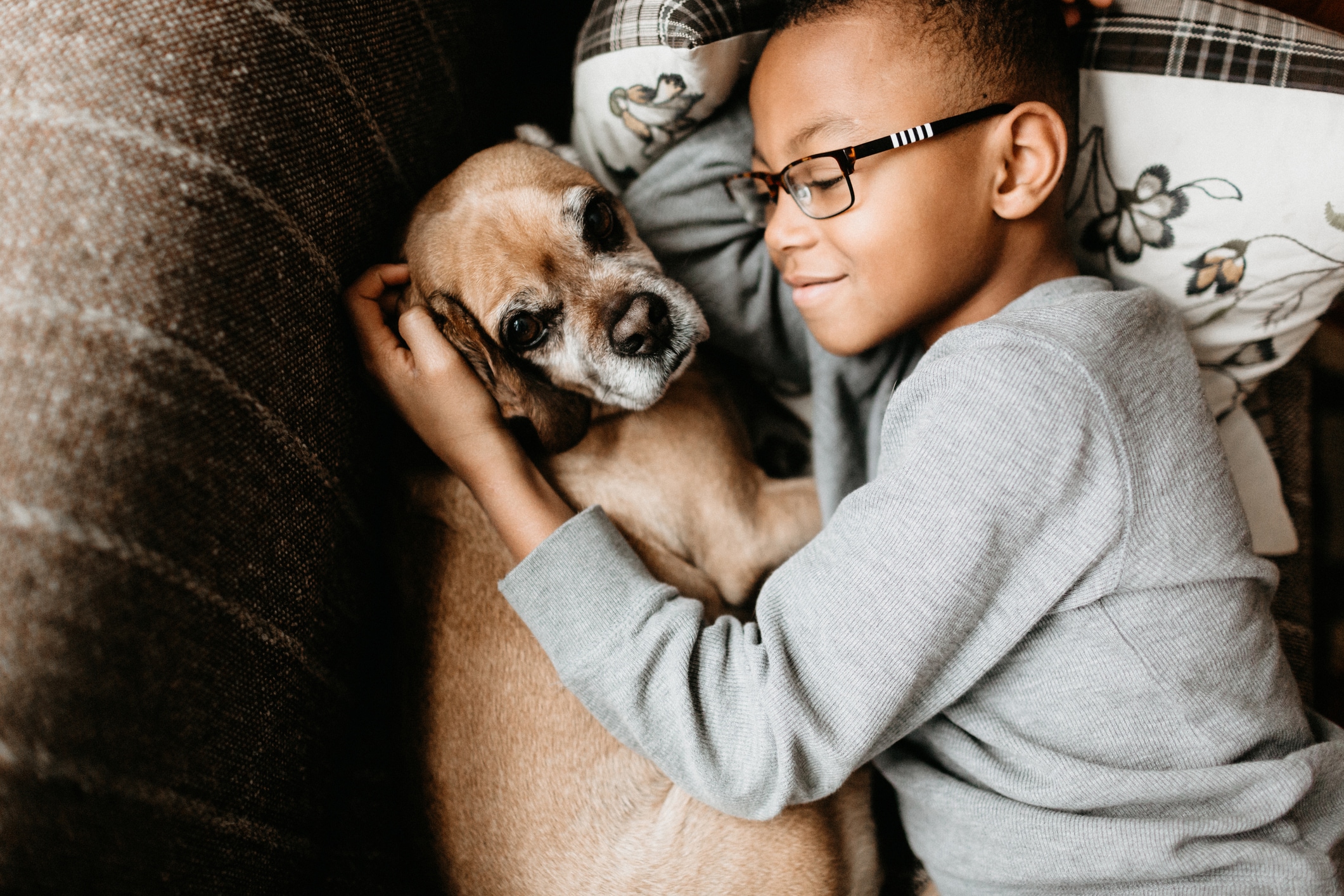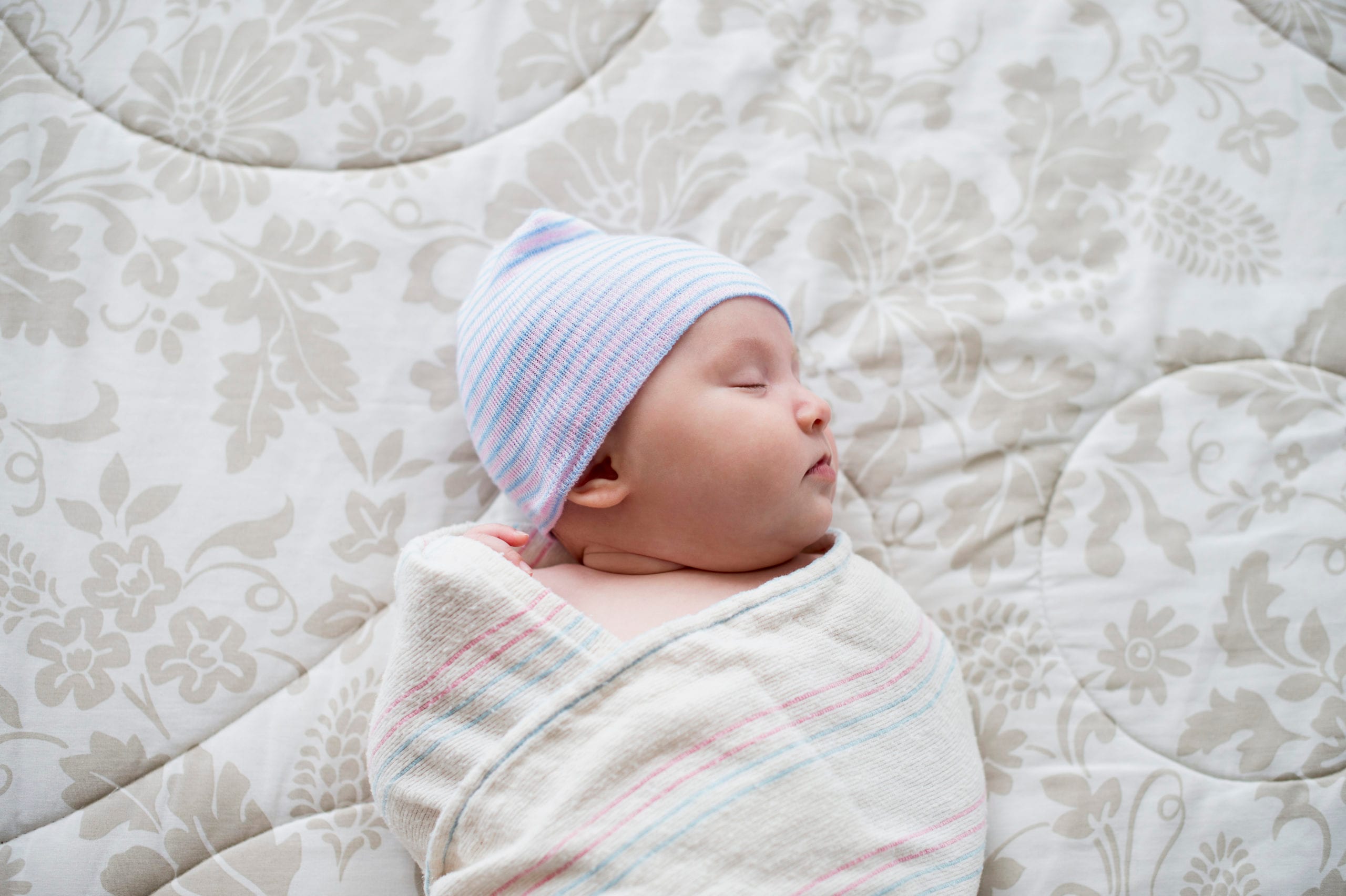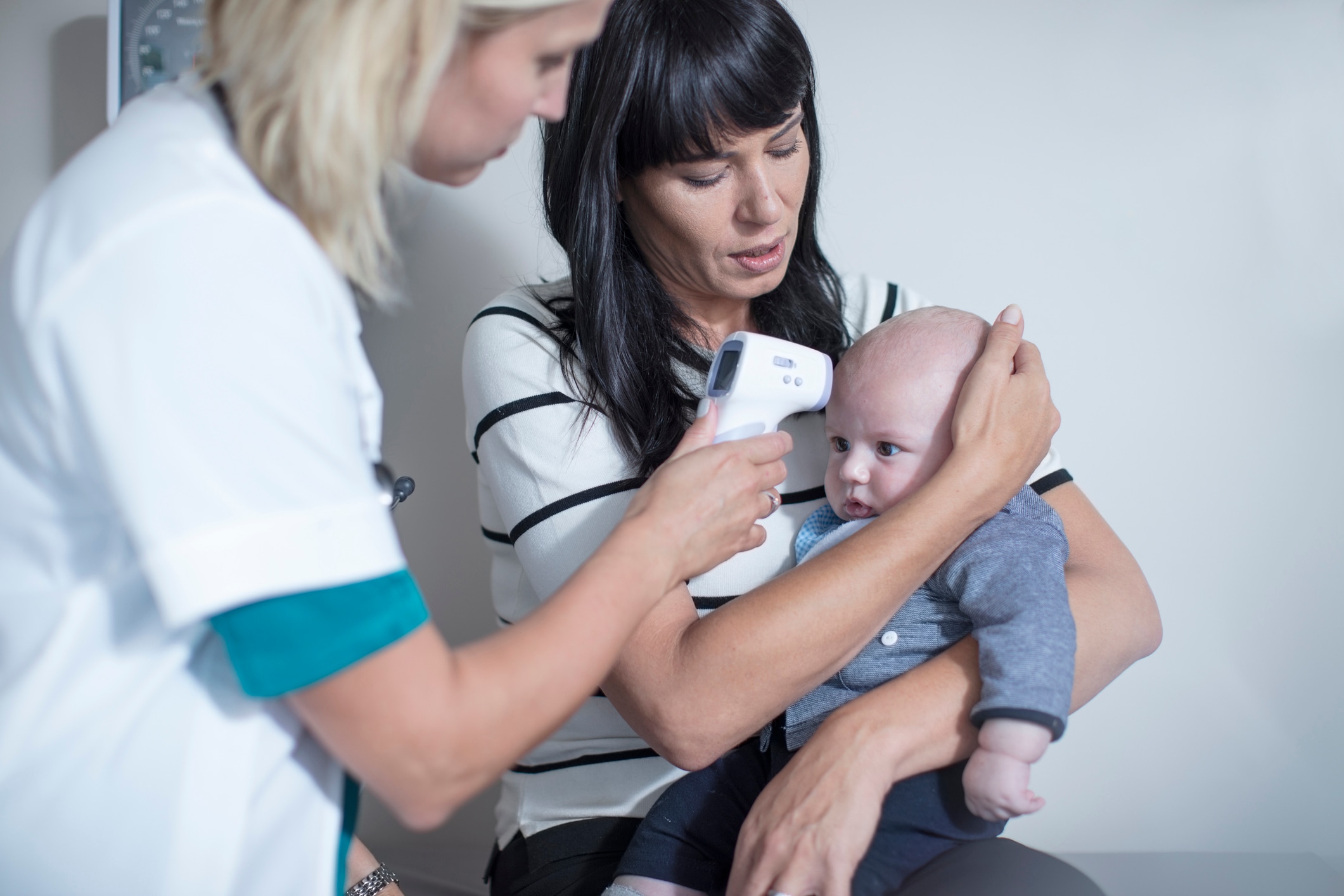Engorged breasts, inescapable mood swings, hemorrhoids, bleeding and extreme fatigue — these are just some of the many post-birth joys that a new mom may experience. While your doctor may have warned you about most of these, there is another unpleasant side effect of your body being finished with pregnancy that you may not have expected at all: postpartum hair loss.
At a time when a new mom is likely to be already struggling to adjust to other changes in her body, watching her hair fall out in clumps in the shower can be traumatizing. Luckily, hair loss after pregnancy is normal, common and — even better — completely temporary.
What causes hair loss after pregnancy?
The average person loses 50 to 100 hairs every day, and it simply goes unnoticed. But during pregnancy, elevated hormone levels keep those hairs from falling out the way they normally would. Remember that thick, lustrous head of hair you marveled at while you were pregnant? Those hormone changes are exactly how you got it. Unfortunately, they’re also to blame for postpartum hair loss.
“Estrogen and progesterone keep hair follicles from shedding their individual strands of hair,” says Dr. Joseph Chappelle, an assistant professor of OB-GYN at Stony Brook University in Stony Brook, New York, and creator of the OB/GYN Podcast. This means that during pregnancy, women have much fewer hairs being lost and they end up with thicker hair. The side effect of this process means that there are nine months worth of hair follicles that are all ready to lose their hair strands when the hormone levels fall back to normal postpartum.”
What this means is that after you give birth, not only do you lose the normal 50 to 100 strands that the average person loses every day, but the hairs that stayed in during pregnancy begin to fall out, as well, leaving you feeling anxious every time you look at your shower drain.
Dr. Alan J. Bauman, a hair restoration surgeon, agrees and says postpartum hair loss is totally common.
“During pregnancy, more hair follicles are in the growing phase and fewer are in the resting phase than normal,” Bauman says. “Soon after childbirth, estrogen and progesterone levels crash back to normal … This results in a temporary but significant shedding that is often noticed around six to 12 weeks after childbirth. It’s not uncommon for women to notice less volume and less coverage during this.”
How common is postpartum hair loss?
An average of 40% to 50% of women will experience postpartum hair loss, according to the American Pregnancy Association. How much hair loss you experience can also vary from pregnancy to pregnancy and, according to Chappelle, there is no real explanation for why some women experience worse hair loss than others.
“I started losing hair about six weeks after I had my twins,” says Judy Gafford, a mom of three from Austin, Texas. “I just assumed it was because of stress, but I started looking into it and realized that it’s actually a thing and that it happens to a lot of moms, and for some reason no one warns you about it. The worst part is, you’re already feeling like a monster after you give birth, you are running on very little sleep and you’re covered in poop half the time. It’s terrible. I was relieved when I realized there wasn’t anything wrong me at all and that so many other moms had the same problem!”
Postpartum hair loss is so common that most hair stylists spend time trying to help their clients get through it.
“Unfortunately, we do deal with postpartum hair loss very often,” says Jax Van Etten, a hair stylist at Beautiful You Hair Studio in Cedar Grove, New Jersey. “It really stinks because new moms are already super hormonal and emotional and the last thing they need is a bad hair day! We tell them not to stress about it because it’s just temporary.”
What is normal when it comes to losing hair after pregnancy?
Most new moms begin to notice post-pregnancy hair loss about three months after giving birth. Once a new mom reaches the six-month mark, her hair’s cycle will begin to stabilize, and most women will see their hair get back to normal by the time they’re celebrating their baby’s 1st birthday.
“This leads to all those wispy short hairs that postpartum women have, especially around the temples,” says Chappelle. “By about the one-year mark, the process is played out and the hair cycle goes back to normal. Of course, it might take much longer for their new hairs to grow out to the desired length.”
“I can’t even tell you how much hair I lost with my first baby,” says Libby Westfield, a mom of two from Chicopee, Massachusetts. “And I’ve always had a lot of hair, so it was really heartbreaking and scary. I think it finally slowed down right before my oldest turned 1, but I did go to my OB about it. She said it was normal, but I would never have thought that on my own. You see hair falling out and you assume the worst. With my second baby, I either didn’t lose as much or was just expecting it, because I really didn’t seem to notice it as much.”
Chappelle says new moms shouldn’t be alarmed when they see they’re losing a large amount of hair during this time, since you’re basically losing an entire year’s worth of hair in just a few months. We’re talking 200 strands a day instead of the 50 to 100 that you would normally see, so adjust your expectations and try not to freak out.
When should you contact your doctor?
Chappelle says you shouldn’t worry about your hair loss until after the one-year mark, even if you have bald patches. After one year, your hair follicles should have reset and, even if your hair isn’t quite as thick or as long as you would like it to be, you should no longer be seeing the excessive loss. However, women who have a history of female alopecia in their family may want to discuss it with their doctor.
If you can’t seem to shake your worries about the hair loss and are experiencing other concerning symptoms such as weight loss, anxiety and a rapid heart rate, you should check in with your general practitioner to make sure that you’re not at risk for developing postpartum thyroiditis.
Can you expect your hair to return to normal?
According to Bauman, theoretically, there is no reason why your hair shouldn’t return to normal after one year. However, some women do feel that their hair never returns to exactly what it was pre-pregnancy, and female alopecia is often to blame.
“We treat many women who are prone to female pattern hair loss or androgenetic alopecia prior to pregnancy who seem to have a significant acceleration in their “pattern” of hair loss after pregnancy,” says Bauman. “In addition to less volume or changes in hair curl or texture, the patient often describes that she now has less frontal coverage or a receding hairline that she didn’t notice before — even after waiting a year for things to rebound.”
If you’ve waited a full year and you think you may be prone to female alopecia, it’s worth it to schedule an appointment with a hair loss specialist to discuss your options.
Tips for dealing with postpartum hair loss
It may be totally normal and completely temporary, but that isn’t going to make you feel much better when you look in the mirror. Luckily, there are a few things you can do to make yourself feel more confident until your hair gets back to normal.
1. Eat a well-balanced diet
Of course, any new mom should be trying to eat well, but think of this as added motivation. Eating a diet full of fruit and vegetables and high in protein will help keep your hair as healthy as possible. While it probably won’t slow your hair loss, it will keep what you do have looking really great.
2. Get some sleep
That’s easier said than done, we know. But sleep will help your body in numerous ways, including keeping your hair healthy. Bonus: Sleep will also help with those postpartum mood swings. If you’re going to be losing your hair, not being so fatigued will at least help you feel a little bit better about it. So take friends and family up on their offers to help so that you can grab a nap.
3. Get a new cut
Some new moms say that getting a shorter cut helped them feel more in control of their hair loss.
“I chopped my hair about four months after I had my son,” Libby said. “It just helped me feel better because I wasn’t trying (and failing) to look like my old self. Plus, my hair kind of grew back all at the same time that way and those little wispy parts were just less noticeable.”
4. Try new hair care products
You may never have considered using a conditioner for thinning hair or a volumizing shampoo, but it is worth it to try some of those products out until your hair is back to normal.
“When your hair is in a vulnerable stage due to increased shedding or dullness or breakage, you need to make sure your hair care products are carefully designed for thinning hair,” Bauman says.
5. Switch up your ‘do
Talk to your stylist about what’s going on and get her advice on the best way to make you feel better in the short term.
“Try switching up how you normally part your hair,” says Van Etten. “Figure out how to part your hair to best camouflage your trouble spots. Or try wearing it back and just spray down the short hairs. Once those are long enough, you can do some sort of bang to blend the hairs.”
6. Be patient with yourself (and your hair)
Whether you like it or not, your post-baby body is different and the changes in your hair are all just part of the package. Remind yourself that postpartum hair loss is normal and temporary and that all you need to do to solve the problem is to simply wait it out.





